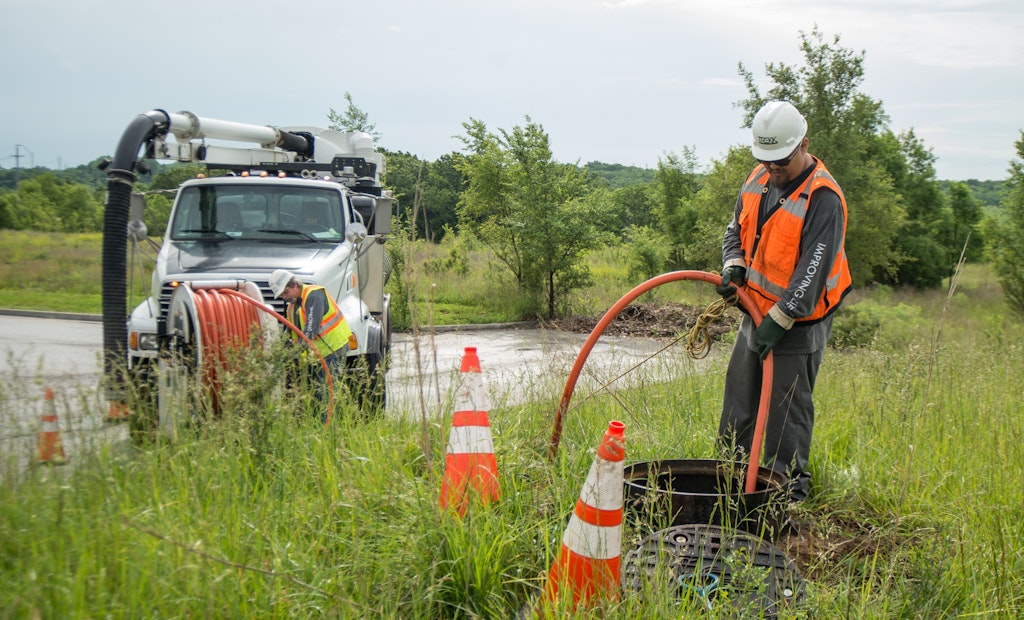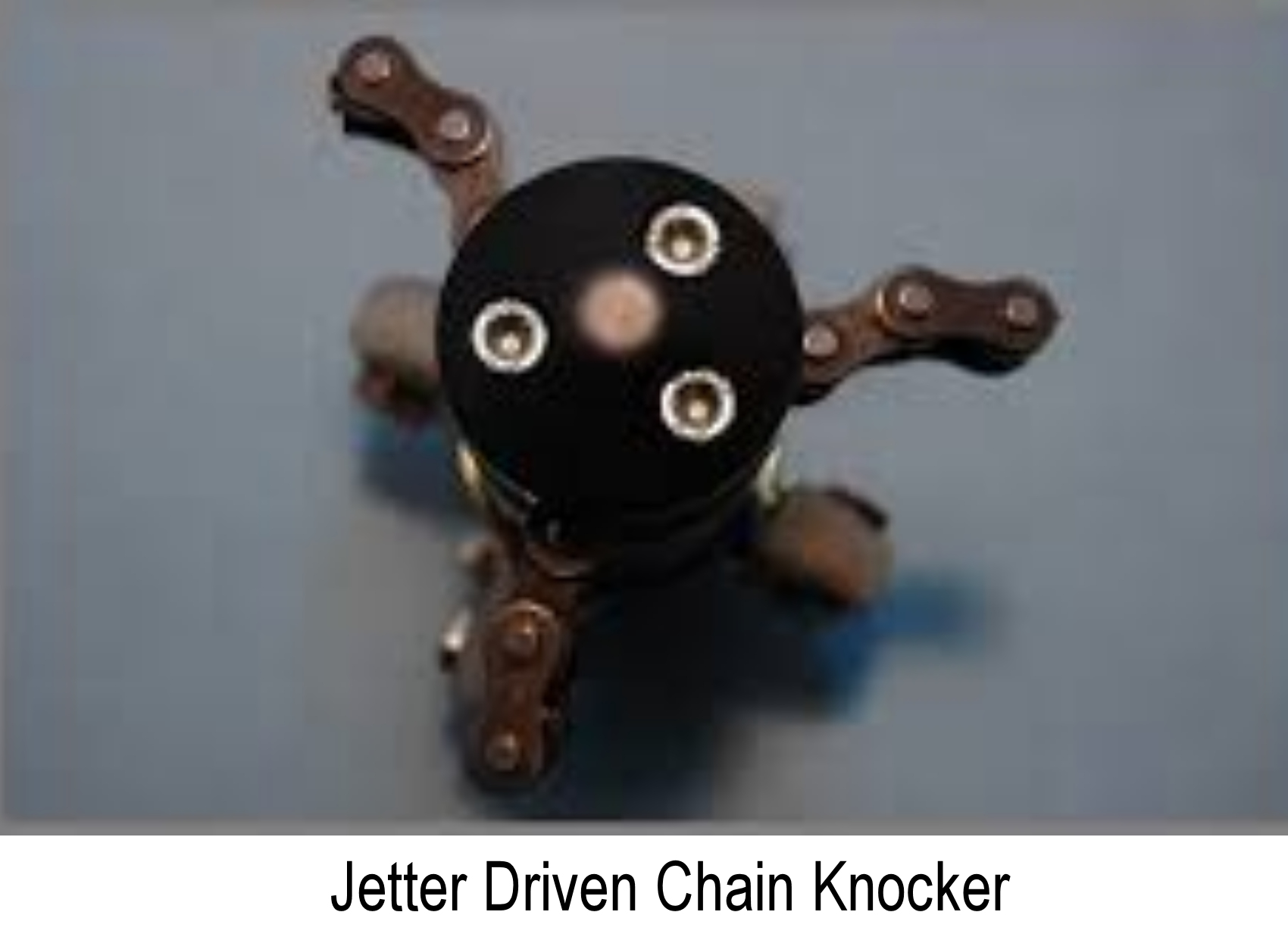
Contractors need to employ methods beyond only jetting to remove tuberculation from cast iron pipe prior to a lining job.
Interested in Cleaning?
Get Cleaning articles, news and videos right in your inbox! Sign up now.
Cleaning + Get Alerts“Everyone tells me I should be cleaning cast iron with chain knockers before a pipe lining job, but my jetter units work pretty well. Do I need a chain knocker and how do I use one?”
Tuberculated pipe means that minerals in the drain water have interacted with the iron in the pipe. This creates a buildup that sticks to the host pipe. Jetting doesn’t remove as much of the tuberculation as you should prior to lining the pipe, but many contractors assume that is as good as it gets. In fact, I’ve watched many jetter contractors work for a couple of days trying to clean a tuberculated line with little success.
This is where mechanical removal outshines hydraulic removal using water pressure. Mechanical force is a product of speed (acceleration) and weight (mass), and it can be substantially higher than the psi of water pressure you get in a typical jetter. Water pressure can achieve a high force and can cut pipe, depending on the pipe strength and thickness, at a pressure between 30,000 and 90,000 psi. But these forces are not typically found in standard jetting devices used for cleaning sewer lines. A more typical force is between 1,000 and 4,000 psi, which works great for clearing a drainline of things like roots, paper, diapers and similar debris. It falls far short, though, of the pressure needed to remove tuberculation, but a water-driven chain knocker may remove it. I say “may” because the acceleration and mass in a water-driven chain knocker is still usually less than mechanically produced mass and acceleration.
There are machines that can develop enough pressure to remove the tuberculation with water alone, but the roadblock is the condition of the pipe. If the pipe were structurally sound these devices could easily solve the cleaning issue, but we often see old cast iron pipe in a less than pristine condition. That makes this approach risky, especially when approaching 30,000 psi. Coupling the chain knocker with a jetting device designed for lower pressures works well.
If the pipe isn’t structurally sound, won’t the chain knockers poke a hole in it? That’s where centering axles coupled to a chain knocker that is restricted in diameter can give the operator a fine-tuned control that helps avoid damaging the pipe wall. The centering axles prevent the chain from striking outside of the parameters the operator sets. Centering axles can be simple brushes attached to the cable such that the chain knocker remains in the center of the pipe instead of dancing around freely. Coupled with a jetting device, the task can be completed pretty quickly with minimal effort and low investment in tooling.
Lining or coating over heavy tuberculation is the equivalent of painting over old exterior paint without any preparation. Doing this sets up the contractor for failure. Chain knockers tied to high-speed cleaning devices may be the solution.
About the author
John Heisler is the owner of Pipe Lining Supply and Quik-Lining Systems Inc. He has 20 years of experience in the CIPP lining industry and over 40 years in the underground construction industry.






